11 Historic Beaufort Sites that Everybody Should See
With over three centuries of incorporation, and visitors coming two hundred years before 1711, Beaufort sits today as a living history, a place where the past and present exist together every day. While the area is full of historical marvels, there are some spots, in particular, you simply have to see and experience. Do yourself a favor and put these historic Beaufort destinations on your itinerary.
Beaufort’s roots go way back to 1711, but its story goes back even further. A true hotbed for history, it all began 500 years ago with the discovery of the area by the Spanish. Being a seaport located at the head of one of the largest natural harbors on the Atlantic coast explains the interest of the Spanish and French explorers that laid claim to the area.
In fact, America started right here in Beaufort. The Spanish settlement at Santa Elena on Parris Island is dated 11 years before St. Augustine, 38 years before Jamestown, and 51 years before the English pilgrims landed on Plymouth Rock. That makes it the first attempt of European colonization of the new world.
1. Prince William’s Parish Church (Old Sheldon Church Ruins)
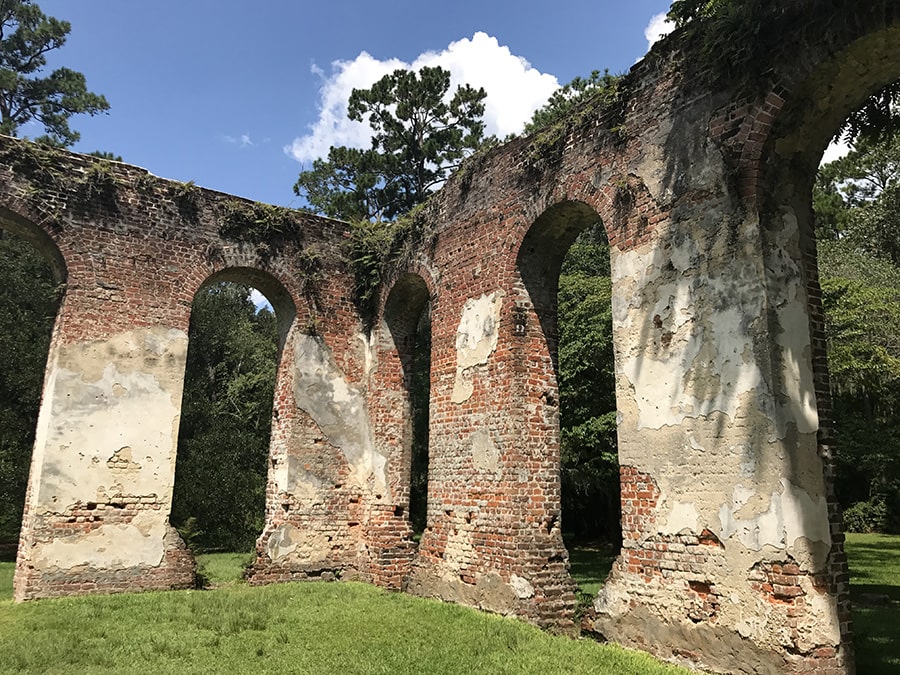
One of the most sacred spots in all of the Carolina Lowcountry is the ruins of the Prince William’s Parish Church, known today as the Old Sheldon Church. The church was built between 1745 and 1753 and is said to be the first conscious attempt in America to imitate a Greek temple. Prince William was burned by the British in 1779 during the Revolutionary War. In 1826 it was rebuilt and legend says it was later burnt by William Tecumseh Sherman in 1865 during his march through the south.
Its sacred grounds are said to be haunted…but they are undeniably beautiful. The site was listed in the National Register of Historic Places on October 22nd, 1970.
2. Hunting Island Lighthouse
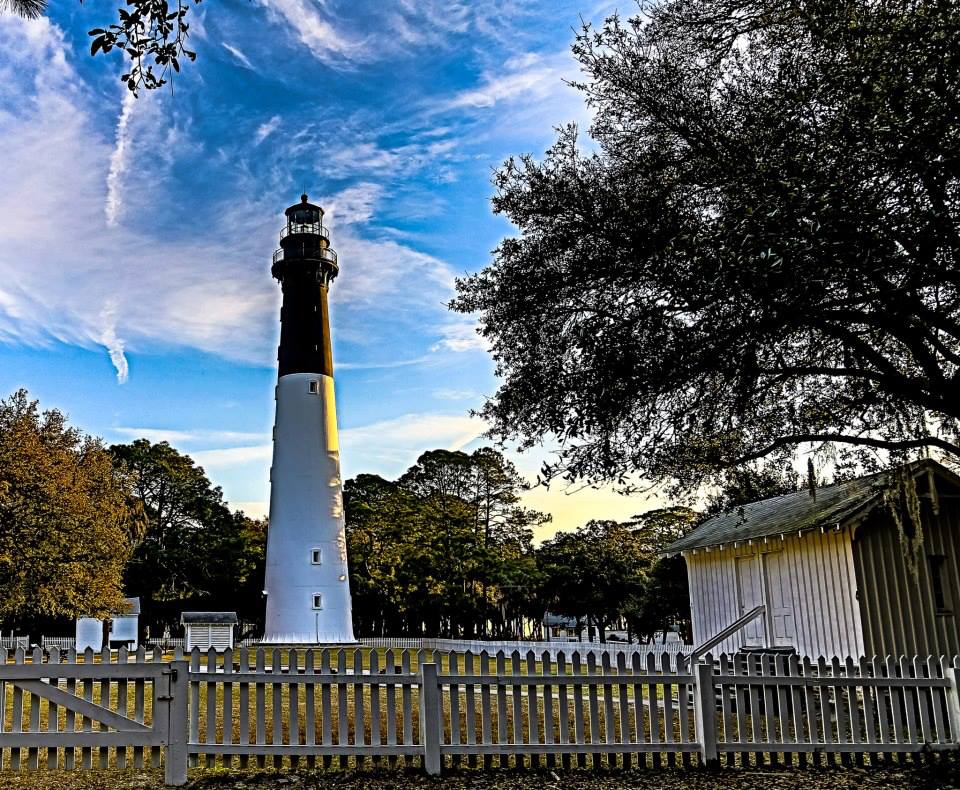
One of the most recognizable and most beloved landmarks in the Beaufort area is the historic Hunting Island Lighthouse. The only lighthouse in South Carolina where you can climb all the way to the top, its history started with its construction in 1859, but was set back as the tower was destroyed during the Civil War in 1862 by Confederate forces so the Union Navy would not be able to use it for navigation.
Construction started again in 1873, and was completed in 1875. It was first located on the northern part of Hunting Island, but severe beach erosion threatened it and its accompanying structures. In 1888 the Atlantic Ocean’s high tide had reached within 35 feet of the keeper’s house. As a result, the Lighthouse, the keeper’s home and two other structures were relocated a mile away in 1889 to their present location. With its 167 steps that lead to an impressive observation deck, the Hunting Island Lighthouse has a beautifully built wrought iron staircase, railings and support beams…and should be on everyone’s list of must-see historic Beaufort spots.
3. Chapel of Ease
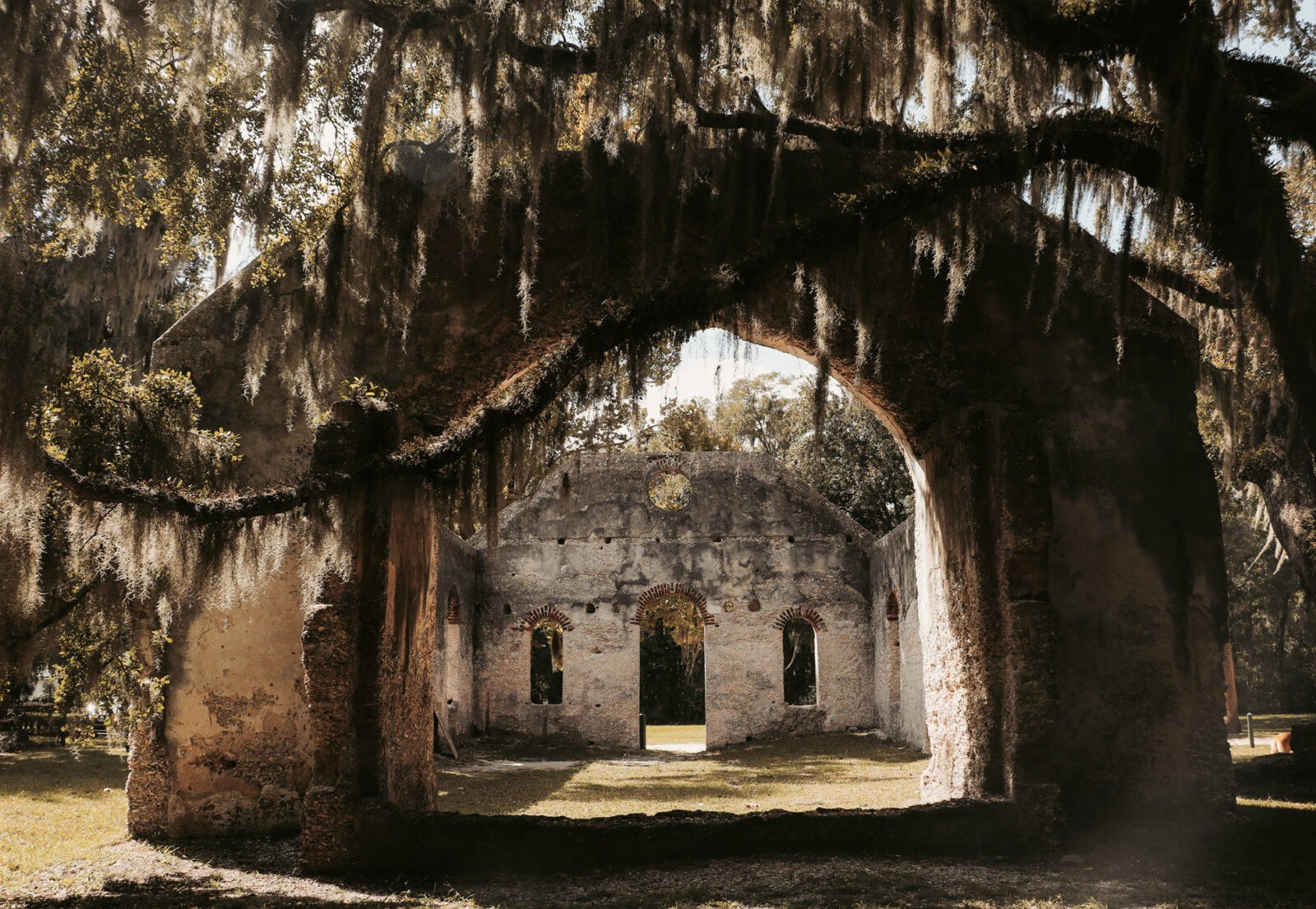
This beautiful relic of a church known as the ‘Chapel of Ease’ is located on St. Helena Island. In the 1700s, the main church of Beaufort was too far away for the many planters who lived on the island to travel back and forth to worship, so the Anglican Church established the chapel to help the families attend church on a regular basis.
Built in 1740 and made of tabby, the chapel served the area until Union troops came ashore in November of 1861. On November 4th, 1861 Sunday services were interrupted by a messenger who brought news of the impending invasion of nearby Beaufort by Union troops. With the arrival of those forces in 1861, the church never again regained its stature.
The church was burned by forest fire in 1886 and it was never rebuilt. It still stands as a wonderful reminder of an extraordinary era.
4. Fort Fremont
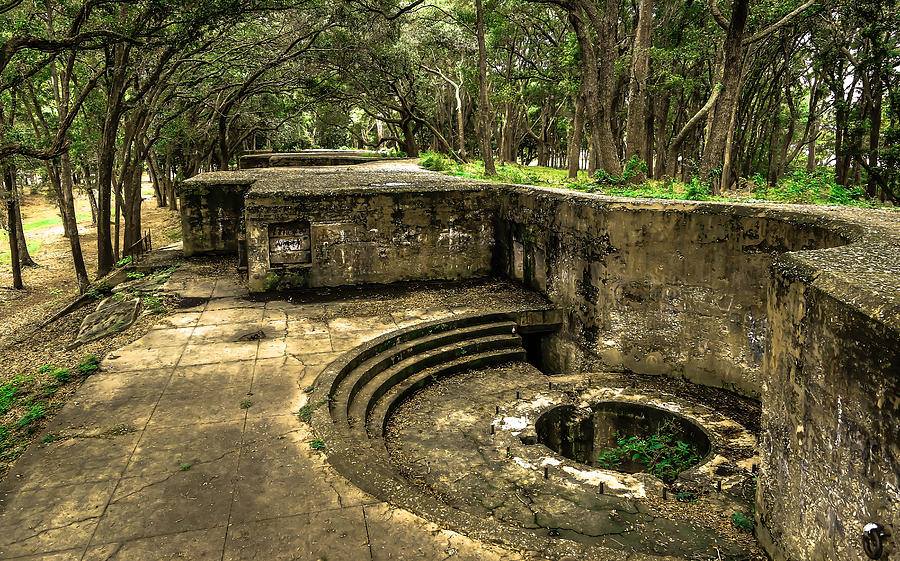
Located on St. Helena Island all the way at Land’s End, Fort Fremont is a Spanish American War fort built in 1899 as one of the coastal batteries authorized by Congress under the $50 million Harbor Fortification Act of 1898. Luckily the war was a short one and the Spanish never made it to St. Helena or Port Royal Sound, and no shot was ever fired from the fort. No threat, or call-to-arms was ever even made.
In 1921,the property was placed on the Secretary of War’s list of properties considered as obsolete and not needed for military purposes, and was deactivated as a military installation in 1921.
Beautiful, eerie and mysterious, and lying right along the water, the fort’s grounds and battery are open free to the public and is listed on the National Register of Historic Places as part of the Historic Resources of St. Helena Island.
5. The Beaufort Arsenal
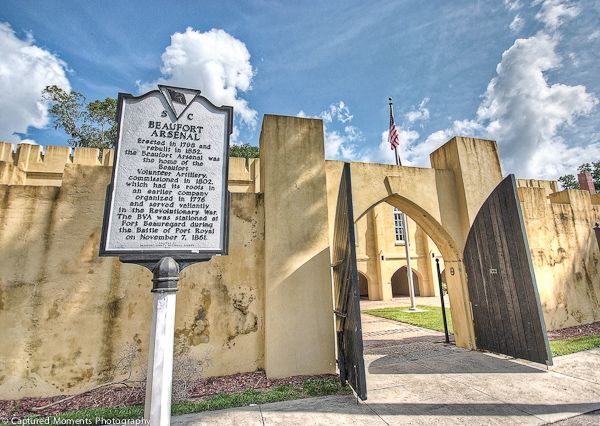
The Beaufort Arsenal is one of the most significant historic buildings in all of Beaufort with over 200 years of service. Completed in 1798 at the whopping cost of $2,500, the original structure was built of tabby and covered with tiles with a wall surrounding it that was also made of tabby.
The Arsenal was the home of the Beaufort Volunteer Artillery, commissioned in 1802, which had its roots in an earlier company organized in 1776 during the Revolutionary War. After the Civil War, the Arsenal became a place for hosting social events and military ceremonies. in 1878, the Beaufort Volunteer Artillery was reorganized and in 1892 the BVA became the South Carolina National Guard.
Today residents and visitors alike enjoy this beautiful and majestic symbol of Beaufort’s important past.
6. Penn Center

Take a trip back in time in Beaufort where you can still witness a thriving local Gullah culture in the Beaufort area through arts, historical preservation projects, community groups, and historic Penn Center. Penn Center was formed as Penn School in 1862, and it was the very first school for freed slaves in the U.S., and is now a Gullah Community Center on St. Helena Island. Penn Center also serves as the unofficial capital of Gullah Culture on the southeast Atlantic Coast. During the 1960′s, Dr. Martin Luther King Jr. and members of the Southern Christian Leadership Conference chose Penn Center as a site for it’s strategic planing.
For more than 150 years, Penn Center has been at the epicenter of African American education, historic preservation and social justice for tens of thousands of descendants of formerly enslaved West Africans living in the Sea Islands. These people have continued to survive to today and represent the most tangible living example of one of the outcomes of the Port Royal Experiment, a plan by the federal government to “test the capabilities of former slaves for freedom and self-support” during the Civil War.
It’s considered one of the most significant African American historical and cultural institutions in existence today. You will go back in time when you visit Penn Center.
Other spots to see….
7. Parish Church of St. Helena
The Parish Church of St. Helena: An Important Part of Beaufort’s History
8. Fort Frederick
9. Parris Island
10. Sams Family Plantation Complex
11. Beaufort National Cemetery







